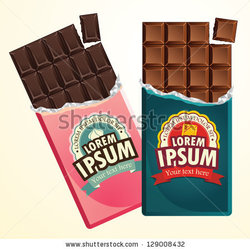Sharing Chocolate Bars
 Diamond and Cookie are sharing some chocolate. They have two bars, one milk and one dark. The dark chocolate bar has 35 rectangular sections, and 5 across the top. The milk chocolate bar has 32 square sections, and 4 across the top.
Diamond and Cookie are sharing some chocolate. They have two bars, one milk and one dark. The dark chocolate bar has 35 rectangular sections, and 5 across the top. The milk chocolate bar has 32 square sections, and 4 across the top.
They each pick a random piece from either the dark or milk bar. What is the probability that Diamond gets a corner piece from the milk bar and then Cookie gets a non-corner edge piece from the dark bar?
Assume that each bar has 4 corners, and that it is random whether they pick the milk or dark bar.
This section requires Javascript.
You are seeing this because something didn't load right. We suggest you, (a) try
refreshing the page, (b) enabling javascript if it is disabled on your browser and,
finally, (c)
loading the
non-javascript version of this page
. We're sorry about the hassle.
Step one is to find out how many sections of chocolate are on the edges of the chocolate bars. This can be done by dividing the total number of sections by the number of pieces along the top, so L M i l k = 4 3 2 = 8 and L D a r k = 5 3 5 = 7 .
Next, we need to figure out how many sections there are in total. That would be 3 5 + 3 2 , which equals 6 7 . Now, we need the number of corner pieces on the milk chocolate bar, and we also need the number of non-corner edge pieces on the dark chocolate bar. We can assumes that M i l k c o r n e r s equals 4 , so we just need to figure out D a r k e d g e s . Not including the corners, the top edges are 3 pieces across, and the sides are 5 across. 5 + 5 + 3 + 3 = 1 6 , and that's what we were looking for.
Now, we need to find the probabilities of the events. P M i l k C o r n e r = 6 7 s e c t i o n s 4 c o r n e r s , and P D a r k E d g e = 6 6 r e m a i n i n g s e c t i o n s 1 6 e d g e p i e c e s , because Diamond already took a piece, so there are only 66 left to choose from. To get the probability that these events will consecutively happen, we need to multiply the probabilities. This gives us 6 7 4 ∗ 6 6 1 6 = 4 4 2 2 6 4 , or 2 2 1 1 3 2 . That's a lot of trouble over chocolate, isn't it? :P